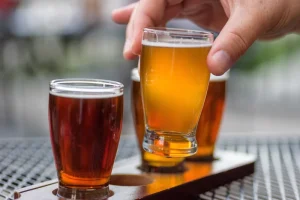The Abstinence Violation Approach Non 12 Step Drug Rehab and Alcohol Treatment

It has also been used to advocate for managed alcohol and housing first programs, which represent a harm reduction approach to high-risk drinking among people with severe AUD (Collins et al., 2012; Ivsins et al., 2019). Because relapse is the most common outcome of treatment for addictions, it must be addressed, anticipated, and prepared for during treatment. The RP model views relapse not as a failure, but as part of the recovery process and an opportunity for learning.
Discover more from Realize Behavioral Health

A single lapse does not have to result in a downward spiral of additional lapses and prolonged relapse, and a significant period of relapse does not have to culminate in a lifelong powerlessness over addictive behavior. Having healthy and effective coping strategies in place to anticipate a lapse or relapse can be pivotal, because the likelihood of never again lapsing into an addictive behavior is often quite low. AVE occurs when someone who is striving for abstinence from a particular behavior or substance experiences a setback, such as a lapse or relapse. Instead of viewing the incident as a temporary setback, the individual perceives it as abstinence violation effect evidence of personal failure, leading to increased feelings of guilt, shame, and hopelessness (Collins & Witkiewitz, 2013; Larimer, Palmer, & Marlatt, 1999). It can impact someone who is trying to be abstinent from alcohol and drug use in addition to someone trying to make positive changes to their diet, exercise, and other aspects of their lives. The AVE was introduced into the substance abuse literature within the context of the “relapse process” (Marlatt and Gordon 1985, p. 37).

Applying AVE More Broadly
Those who drink the most tend to have higher expectations regarding the positive effects of alcohol9. In high-risk situations, the person expects alcohol to help him or her cope with negative emotions or conflict (i.e. when drinking serves as “self-medication”). Expectancies are the result of both direct and indirect (e.g. perception of the drug Drug rehabilitation from peers and media) experiences3.
Relationship between goal choice and treatment outcomes
- An individual who feels guilt often uses substances to ease their guilt, which can lead to AVE.
- Does it mean a person must continue to drink or drug until the use returns to the initial level?
- Mental relapse is characterized by thoughts of using drugs or alcohol again.
- It can be a single instance where someone decides to use the substance again.
- The importance of understanding the stages of relapse and avoiding them cannot be overstated.
- In the multifaceted journey of overcoming addiction and living a healthier life, individuals often encounter a psychological phenomenon known as the abstinence violation effect (AVE).
- Emotional relapse is not necessarily caused by these natural emotions but rather by how you cope with them.
It is possible to rationalize the fact that if you continue to use, you might not experience the same consequences as before. Abstinence can take various forms, with alcohol abstinence being one common example. At its most basic, this involves refraining from consuming anything containing alcohol, but a person might also choose to avoid situations that could involve alcohol, like going to nightclubs or bars. These variations can depend on things like individual self-control, the motivation for the abstinence, and other factors. In many cases, relapse can also affect the brain by causing the abstinence violation effect discussed in this article.

Abstinence Violation Effect AVE What It Is & Relapse Prevention Strategies
- If you can relate with this, I’d like you to think of a time when you deviated from your goal to abstain and what your mind told you the moment you veered off that path.
- For example, I am a failure (labeling) and will never be successful with abstaining from drinking, eating healthier, or exercising (jumping to conclusions).
- Coping is defined as the thoughts and behaviours used to manage the internal and external demands of situations that are appraised as stressful.
- The study was especially notable because most other treatment readiness measures have been validated on treatment-seeking samples (see Freyer et al., 2004).
Naturally, the risk of returning to an addiction can be another effect of abstinence. Practicing healthy coping strategies, making appropriate lifestyle changes, and getting outside support may help to prevent relapse and maintain mental well-being. Evidence of the abstinence violation effect can be seen in any individual who attributes a lapse and subsequent relapse to entirely uncontrollable conditions, such as a perceived character flaw or adherence to the constraints of addiction.



